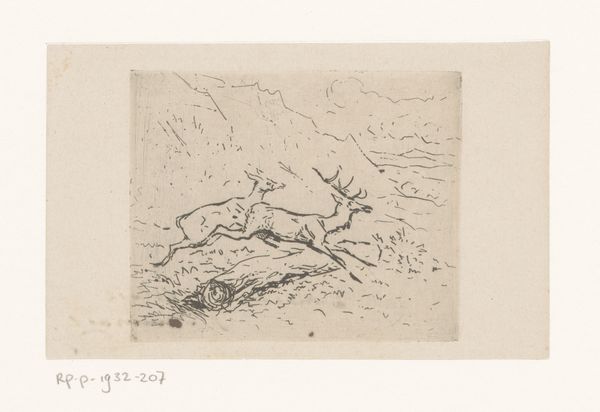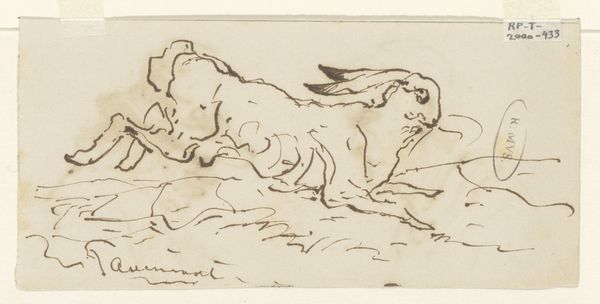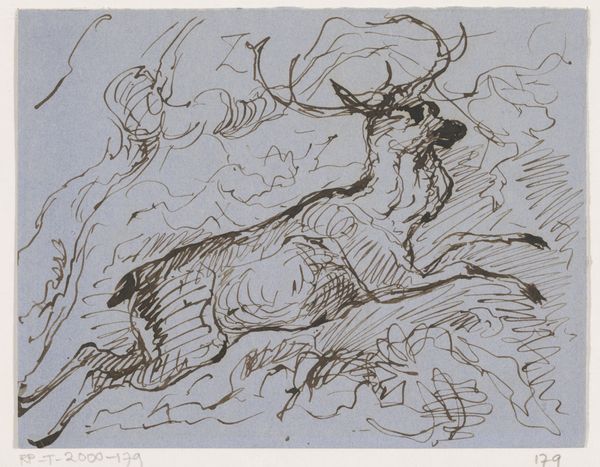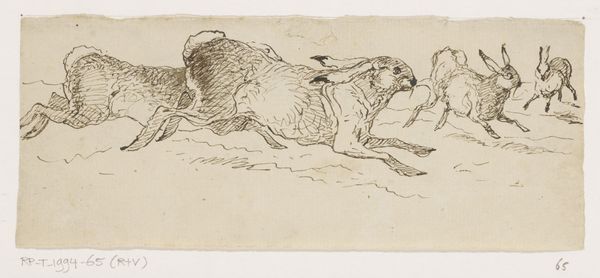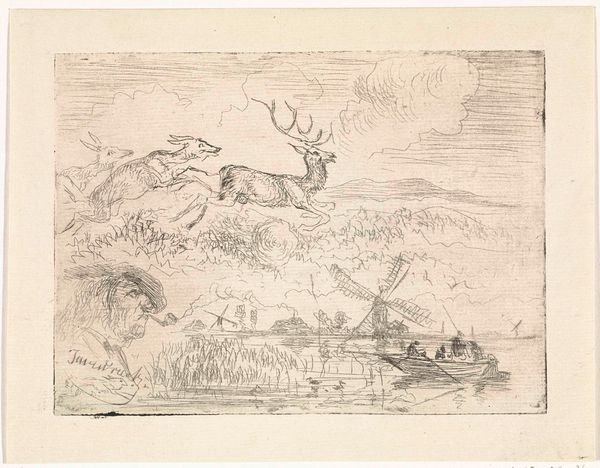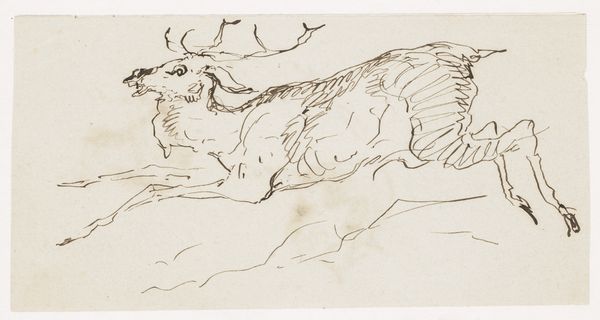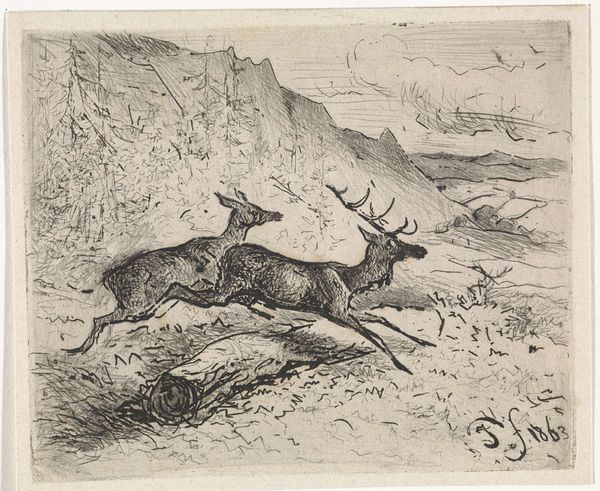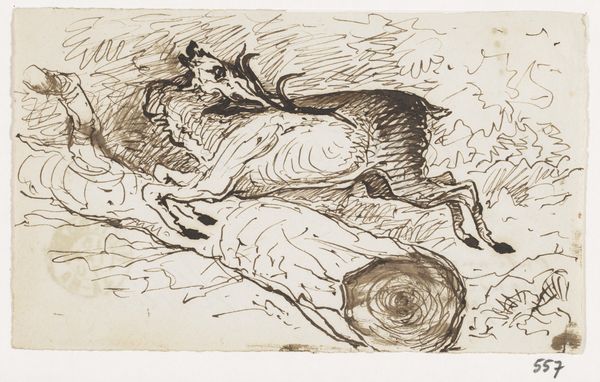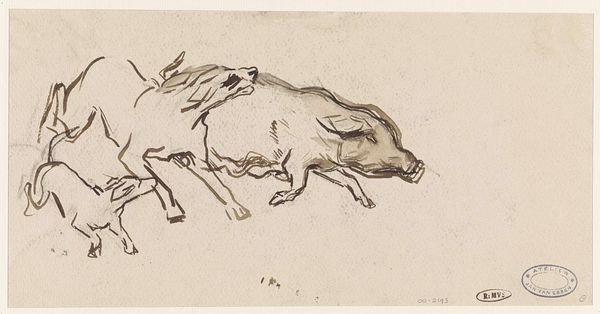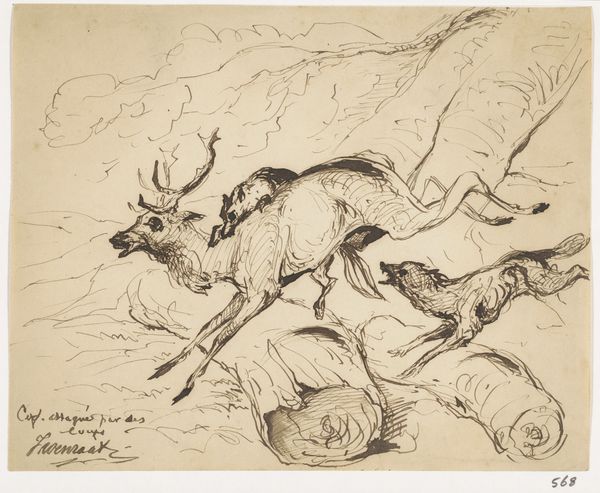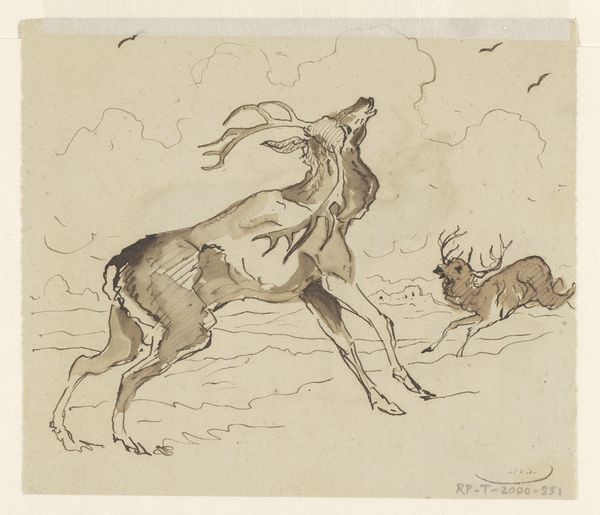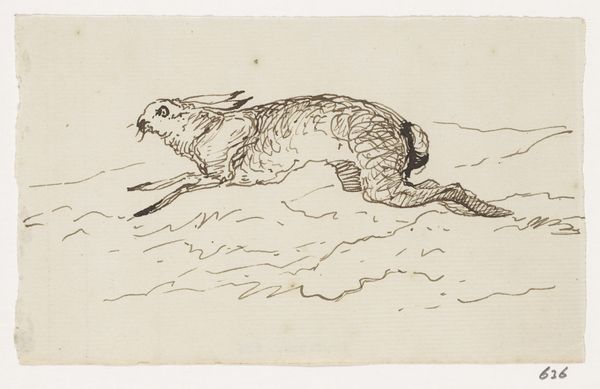
drawing, print, etching, ink
#
drawing
#
ink drawing
#
pen drawing
# print
#
etching
#
landscape
#
etching
#
figuration
#
ink
Dimensions: height 80 mm, width 96 mm
Copyright: Rijks Museum: Open Domain
Curator: Here at the Rijksmuseum, we’re fortunate to have Johannes Tavenraat’s "Two Running Deer," crafted in 1863. This piece combines the techniques of etching, drawing and ink work. Editor: It has a hurried quality, almost frantic. The sketchy lines convey a sense of rapid motion. Curator: The prevalence of landscape art was definitely on the rise as more artists sought to capture their natural surroundings—or imagined spaces—with quick studies becoming increasingly popular, perhaps reflecting the accessibility of portable materials. Editor: Looking closely, I find it interesting how Tavenraat uses varying line weights to suggest depth. The foreground details are bold and clear, then dissolve into the more atmospheric, mountain shapes in the background. Curator: Hunting scenes were quite a staple, so you can't help but wonder, was Tavenraat commissioned, or creating a study in response to the popular art trends of the era, maybe even with an eye toward how Landseer’s stag paintings were capturing imaginations back in Britain? Editor: I'm more captivated by how the medium dictates the message here. The linear etching allows Tavenraat to imply a detailed scene with incredible economy, relying on the viewer to complete the image. The abstraction almost adds to the animalistic quality of these fleeing deer, wouldn’t you say? Curator: Absolutely, the sketch-like appearance and accessible medium may have also influenced the way it was received and perceived – maybe seen as less of a prestigious piece. Editor: Despite that, it’s an image that continues to capture our attention today. Curator: Yes, Tavenraat offers us a quick view into a popular genre from the period through this unique medium.
Comments
No comments
Be the first to comment and join the conversation on the ultimate creative platform.
